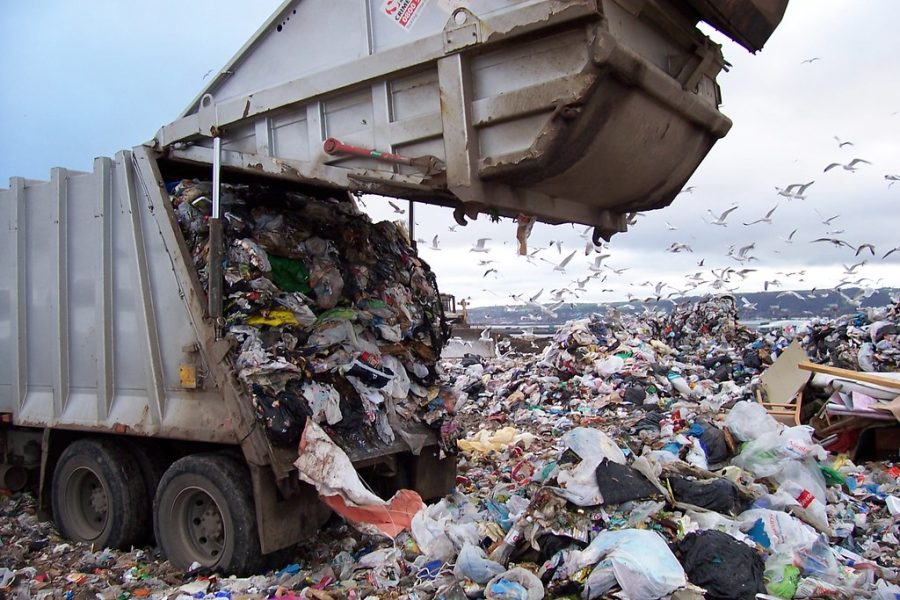Unlike Your Purchase, This Damage Can’t Be Undone
Photo Courtesy of Creative Commons
Garbage truck pours waste into a dump in Minnesota. The Minnesota Pollution Control Agency defines a “dump” as a landfill that never held a valid permit from the agency. “Some old dumps have leached pollution into nearby soils and bodies of water, threatening groundwater and other natural resources,” the MPCA’s website said.
October 19, 2022
Online shopping has gradually become the preferred medium of the masses, but with all the positives that come from having, well, literally anything available at the push of a button, also come some weighty consequences.
A report from the National Retail Foundation, found that the average retailer in 2021 lost about $166 million in returns for every $1 billion sold. Meaning, an approximate 16.6% of all 2021 retail sales in the US resulted in a return. Additionally the NRF found that online orders have a higher rate of return, making them a major contributor to this overall increase.
Yes, 16.6% seems like a fairly low number, but aside from the loss in profit, one must wonder, where are all these returns going? An article from CNBC explains that, annually, about 6 billion pounds of these returns end up in a landfill.
Online retailers often give their consumers options when it comes to making a return. Amazon, for example, depending on the item in question, will allow consumers to choose: Return to Seller, Disposal, Liquidation, or Fulfillment by Amazon Grade and Resell. But despite the illusion created by these choices, many of these returned items will never make their way back onto shelves (or digital shelves?).
So what can you, the consumer, do? Well, rather than attempting to change the way the world of retail operates, you can try to start by making small changes in your own shopping habits.
A Navar study found that in 2021, 42% of all online returns were due to issues with size, fit, or color.
“Bracketing,” described in an article from Business Insider, “is when a customer buys multiple sizes or colors of a single item, chooses the version they like best, and sends the rest back to the retailer.”
As you can imagine, practices such as “bracketing,” largely contribute to the increase of return rates. While it’s a common problem, there are simple and effective ways to reduce issues with color or size.
For example, the same study found that 83% of survey participants believed that reading reviews from other consumers helped prevent them from making a return. Additionally, using the sizing charts or measurements provided by sellers, helped prevent 78% of participants from making a return.
Other shopping practices such as “wardrobing,” described by a blog post from Navar as, “the act of buying an item and wearing it, only to return it later,” contribute to retailers being unable to resell returned items.
“Wardrobing” is considered one of many types of fraudulent returns, which the NRF states added up to a total value of $78.4 billion in 2021. Despite being a seemingly victimless crime, wardrobing can lead to product defects such as stains, odors or tears. As a result many wardrobed items find their way into the trash, contributing to unnecessary product waste and a loss of retailer profit.
There may be no simple answer to this problem, but by making small changes in your shopping patterns, as a whole we can work to reduce product waste and the swelling of landfills.

